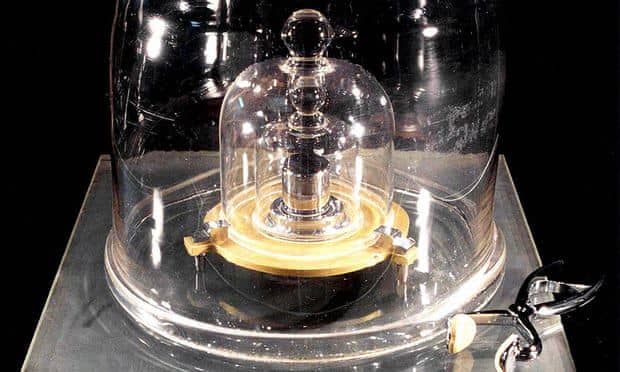The world’s measuring system is making a historical shift from physical standards. This was agreed upon last year by scientists and representatives from about sixty countries. The most famous physical standard is that of the international prototype kilogram that goes by the name of Le Grand K. It is a small metal cylinder that is in Paris and has defined weights and corresponding measurements ever since 1889.

The change is being introduced in order to remove the reliance on physical items. Why? Because even microscopic changes ranging from air pressure to the metal that has defined the kilogram can have huge ramifications. Stephan Schlamminger, a physicist at the National Institute of Standards and Technology (NIST) in Gaithersburg, Md, said, ‘Unlike a physical object, a fundamental constant doesn’t change. Now a kilogram will have the same mass whether you are on Earth, on Mars, or in the Andromeda galaxy.’

The kilogram is the standard unit that is used around the world with the exception of a few countries. It was created back in the 1790s during the French Revolution to bring an end to different measuring systems all over the country. The efforts of the researchers soon spread all over the world, and 17 nations in 1875 formed the International Bureau of Weights and Measures, BIPM. Fifty-nine nations as of now make use of BIPM today.
World Metrology Day is celebrated on May 20, and the kilogram was not the only unit that underwent alteration on this day. Four units out of the seven famed SI units will be changed. This includes ampere, the Kelvin, and the mole. Amperes are used for measuring the electric current, Kelvin is used for measuring temperatures, whereas the moles are used for measuring the number of molecules.

These changes will only be noticed by the scientists that require the most precise measurements, and otherwise will remain unnoticeable. In fact, BIPM says in a statement that the change for the Kelvin will not be taking effect today but instead, ‘lays the foundation for future improvements.’ The kilograms are no longer measured using the Le Grande K but rather by making use of the Planck constant. The Planck constant was developed in 1900 by German theorist Max Planck and is defined as a cornerstone in quantum physics.

Five years later, Einstein put forth his famous equation that showed that energy is equal to mass. Plank had an equation of his own, E= hv where E is the energy of a particle light. NIST explains, ‘Taking the two equations together yields a counterintuitive but hugely valuable insight: Mass—even on the scale of everyday objects—is inherently related to h, which Planck first used to describe the vanishingly small energy content of individual photons emitted by the atoms in hot objects.’
Schlamminger says, ‘If we make contact with aliens, what are we going to talk to them about? Physics. There is nothing else. But if you tell aliens that our units of measurement are based on a hunk of metal, you will be the laughingstock of the galaxy.’ Scientists understand that they are tinkering with historical precedents; however, they remain confident that they are moving towards a more accurate future. Director of NIST, Walter Copan, said, ‘Lord Kelvin, one of the leaders in the field of metrology said, ‘To measure is to know’. As we are able to measure with increasing precision, we are able to learn more about the fundamentals of our universe and the fundamentals of life.’


